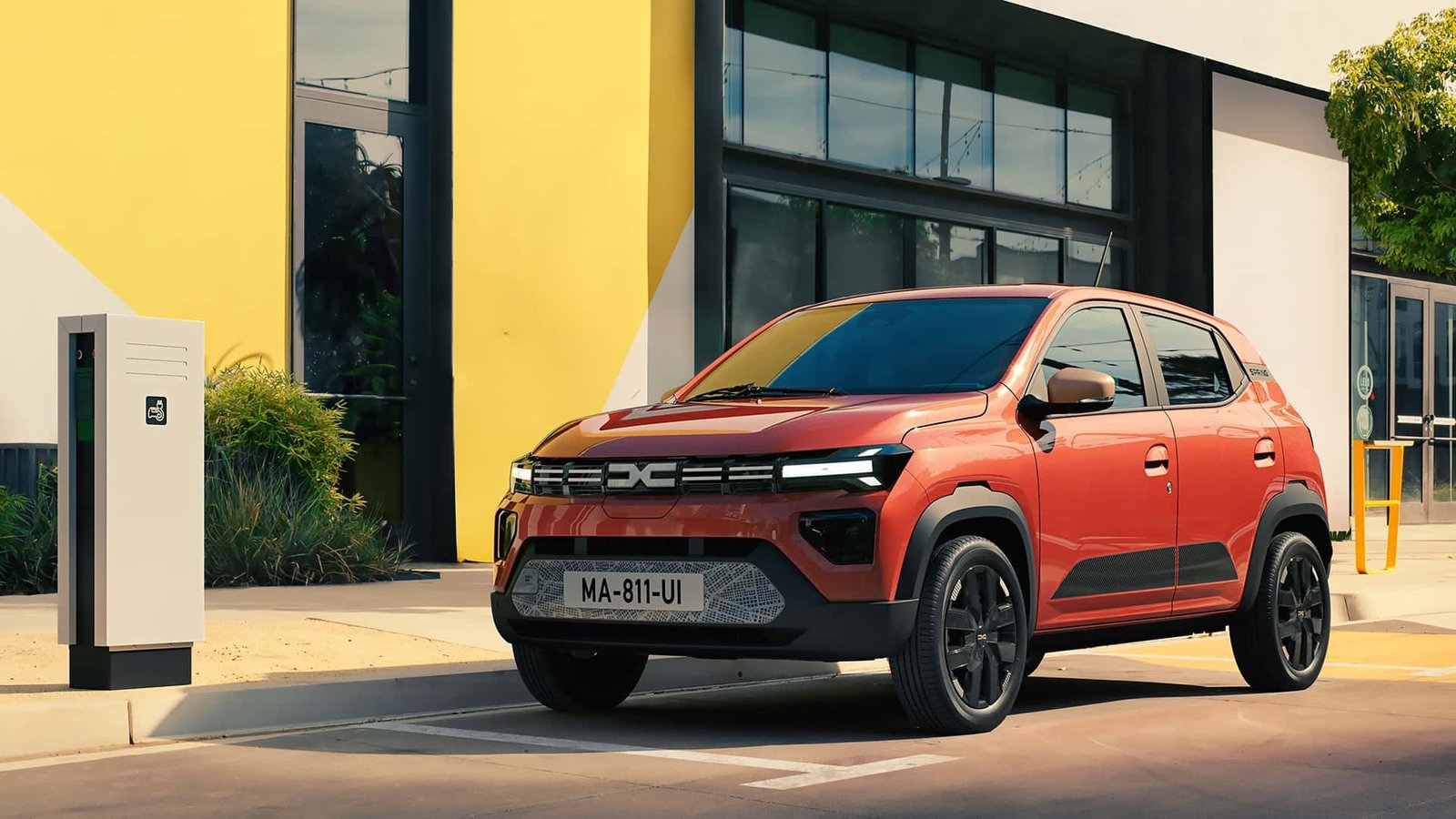The Dacia Spring might not ring a bell in the United States, but in Europe, it’s known as one of the cheapest electric cars on the market. It’s small, it doesn’t have a lot of range, and it’s not particularly powerful, but with a price as low as $13,000 (12,000 Euro) after incentives, it’s hard not to consider it when buying a new car for urban driving.
And now it’s better than ever because the Romanian (but Chinese-made) EV got its biggest overhaul yet, at least when it comes to looks. Oh, and it has a frunk now.
Get Fully Charged
Dacia Spring gets a makeover
The Dacia Spring, which is one of the cheapest EVs available in Europe, got a significant facelift that brings V2L and new looks.
We’ll get the hard specs out of the way first because nothing changes compared to the outgoing model. There’s the same 27-kilowatt-hour battery (gross capacity) that enables a WLTP-rated range of around 140 miles (225 kilometers) and the same two electric motor options: 33 kW (44 hp) and 48 kW (64 hp).
Charging can still be done via an AC source at up to 7.4 kW, while DC fast charging–which is optional–tops out at 30 kW. According to Dacia, Spring drivers only travel an average of 23 miles a day, so these stats should be more than enough for short urban driving sessions.
That said, this second facelift (the first design tweaks were introduced last year when the more powerful motor also made an appearance) brings significant design changes and a very interesting feature for such an affordable car: vehicle-to-load (V2L). Granted, the output isn’t anything to write home about–roughly 3.5 kW (220 volts at 16 amps)–but it’s still better than nothing. With V2L, owners can use an adapter to power things like appliances and tools using the car’s battery as a sort of mobile generator.
Design-wise, almost everything is new, both inside and out. The front end now features Dacia’s signature Y-shapes LED headlights while the rear gets segmented tail lights and a full-width black strip that includes the Romanian carmaker’s name.
The roof rails of the outgoing model are no longer offered, as Dacia says they’re not really needed for a city car, and by the looks of it, almost all body panels are new. However, Renault’s CMF-A platform that underpins the car is the same as before.
Inside, the refreshed Spring gets a 7-inch configurable instrument cluster on all trim levels and a 10-inch infotainment touchscreen on the center console on the most expensive versions. The entry-level variant gets an integrated smartphone holder instead of the 10-inch screen.
There’s also a redesigned center console, a new height-adjustable steering wheel (the old model didn’t offer any adjustment), and refreshed door cards, and the rotary gear selector has been replaced with a switch that has a B mode for energy recuperation. However, the manual handbrake handle is still there, for better or worse.

Dacia Spring (2024) interior

Dacia Spring (2023) interior
The facelifted Dacia Spring’s interior can also accommodate what the company calls YouClip accessories–things like cable ties, smartphone holders, and bag supports that clip into cutouts in the dashboard.
The size of the Spring remains largely unchanged. The length went down from 145.8 inches (3.73 meters) to 145.6 in (3.70 m), but the trunk capacity went up by 8% to 10.8 cubic feet (308 liters). Plus, there’s a 1.23 cu ft (35 liters) frunk now that’s big enough for the Level 1 charging cable.
Three versions of the Spring will be available in Europe later this year: Essential, which only comes with the 33 kW motor, Expression, which can be specced with either motor, and Extreme, which gets the more powerful 48 kW drive unit.
The outgoing model had a base price (without incentives) of around $24,900 (23,000 Euro). The prices of the refreshed Spring haven’t been announced yet, but we expect them to be similar to what was previously available.
[ad_2]
Source link




